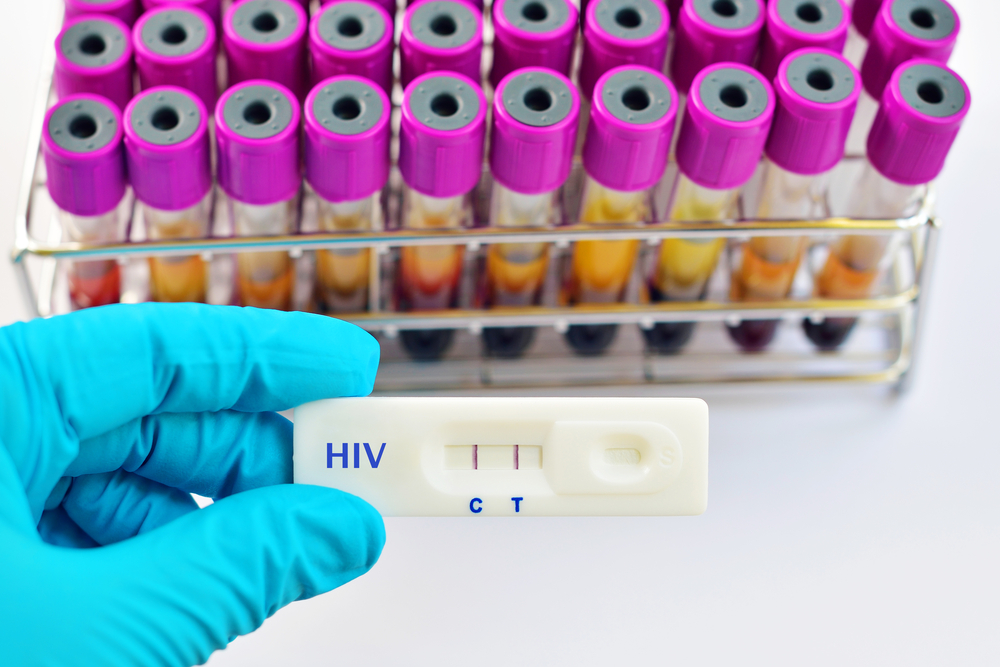Just like every other health condition, Sexually Transmitted Disease (STD) should be something addressed every now and then. Although, there are many reasons to why it is essential to educate yourself about STD and the importance of practicing healthy sexual behaviours. If you are sexually active, there is a possibility that you might contract STD if you’re not careful.
Being aware of STDs is a necessity in keeping you and your partner safe. Furthermore, it could help you make wise decisions and avoid scarring your future.

To shed some light on this topic and debunk some common myths, we reached out to Pharmacist in charge and Managing Director of Sunbright Pharmacy in Semenyih, Jennifer Lui Soek Mei.
1Twenty80: FIRSTLY, COULD YOU SHARE WITH US THE DIFFERENCE BETWEEN STD AND STI?
Jennifer Lui Soek Mei: STD stands for Sexually Transmitted Diseases, whereas STI means Sexually Transmitted Infections.
Essentially, the differences between these two conditions are one is a disease while the other is an infection. Not all diseases begin with infections, but many do. An STI is only considered a disease when it causes symptoms to develop.

1Twenty80: HOW CAN THEY BE TRANSMITTED?
Jennifer: STDs or STIs are generally acquired by sexual contact. The bacteria, viruses or parasites that cause STDs may pass from person to person via blood, semen or vaginal and other bodily fluids.
Kissing can be one of the most exciting parts of a relationship. However, do take note that only certain STDs or STIs are transmittable through kissing. Two common ones are Herpes Simplex Virus (HSV) and Cytomegalovirus (CMV).
STDs or STIs are generally acquired by sexual contact. The bacteria, viruses or parasites that cause stds may pass from person to person via blood, semen or vaginal and other bodily fluids.
1Twenty80: HOW CAN A PERSON KNOW IF THEY HAVE AN STD?
Jennifer: Signs and symptoms that might indicate an STD includes:
- Pain when peeing.
- Itchy genitals or anus.
- Unusual vaginal bleeding.
- You’re pregnant with symptoms of an STI.
- You or your partner have symptoms of an STI.
- Warts in your mouth or throat, but this is very rare.
- Unusual discharge from the vagina, penis or anus.
- Blisters, warts or soreness around the genitals or anus.
- Lumps or skin growths around the genitals or bottom (anus).
There are also oral symptoms of STD that should never be ignored such as:
- Sores in the mouth, which may be painless.
- Lesions similar to cold sores and fever blisters around the mouth.
- Sore throat and difficulty swallowing.
- Redness with white spots resembling strep throat.
- Swollen tonsils and/or lymph nodes.
1Twenty80: IS IT TRUE THAT SOME STDs HAVE NO SYMPTOMS AT ALL?
Jennifer: Many STIs have no symptoms at all, like HIV. The only way to know for sure is to get tested. Some STDs may cause debilitating signs and symptoms, while others may be present without any symptoms which is known as asymptomatic. People with STD and do not have any notable signs is an issue as the condition can be spread to others unknowingly.
With or without symptoms, STDs can still be passed down to your partners. So, it is important to use protection (condom) while having intercourse.
1Twenty80: HOW MANY TYPES OF STD ARE THERE AND WHAT IS THE MOST COMMON TYPE?
Jennifer: There are many types of STDs and some of the most common ones are:
- Syphilis
- Herpes
- Hepatitis
- Pubic lice
- Gonorrhea
- Chlamydia
- Trichomoniasis
- Human Papillomavirus (HPV)
- Human Immunodeficiency Virus (HIV)
1Twenty80: IS THERE A CURE FOR THIS MEDICAL CONDITION?
Jennifer: This depends on the type of STI. Treatment is available for all STIs and some can be treated with antibiotics. Antibiotics, often in a single dose, can cure many sexually transmitted bacterial and parasitic infections, including Gonorrhea, Syphilis, Chlamydia and Trichomoniasis. Typically, you will be treated for Gonorrhea and Chlamydia at the same time because the two infections often appear together.
Apart from that, Bacterial STDs can be cured with antibiotics if treatment begins early enough. If ever you have Herpes or HIV, you will be prescribed an antiviral drug. STIs caused by viruses, such as Genital Herpes and Genital Warts cannot be with antibiotics, but treatments are available to relieve symptoms. Viral STDs cannot be cured, but you can manage symptoms with medications.

1Twenty80: HOW OFTEN SHOULD ONE GET TESTED FOR STD?
Jennifer: Getting tested for STDs at least once a year is extremely crucial, especially if you are sexually active. Make sure you have an open conversation about your sexual history when you pay a visit to a healthcare professional. If you are not comfortable talking with your regular health care provider about STDs, there are many clinics that provide confidential and free or low-cost testing.
Some of the things you should take note of before visiting your healthcare professional includes:
- Do not have sexual contact while waiting for your appointment.
- Do not douche unless instructed to do so by your health professional. Douching may flush an infection up into the uterus or fallopian tubes and cause Pelvic Inflammatory Disease (PID).
Do take note that many STD symptoms may go away or change quickly. In case of such a situation, it will be harder for your health professional to diagnose your condition after the symptoms have changed. This may cause a delay in being evaluated and may lead to more serious illnesses.
Below is a brief overview of STD testing recommendations:
- Adults and adolescents from ages 13 to 64 should be tested at least once for HIV.
- All sexually active women youger and older than 25 years with risk factors such as new or multiple sex partners should be tested for Gonorrhea and Chlamydia every year.
- All pregnant women should be tested for syphilis, HIV, Hepatitis B and C starting early in pregnancy. At-risk pregnant women should also be tested for chlamydia and gonorrhea starting early in pregnancy.
- All sexually active individuals from the LGBTQ community should test at least once a year for syphilis, chlamydia, and gonorrhea.
- Those who have multiple or anonymous partners should be tested every three to six months.
- People who have had oral or anal sex should talk with their healthcare provider about throat and rectal testing options.
Getting tested for STDs at least once a year is extremely crucial, especially if you are sexually active.
1Twenty80: COULD YOU SHARE WITH US SOME OF THE PREVENTATIVE MEASURES THAT CAN BE TAKEN TO AVOID GETTING STD?
Jennifer: Some of the preventative measures that should be taken before having intercourse includes:
- Using latex condoms every time you have intercourse.
- Mutual Monogamy.
- Reduce number of sex partners.
- Arm yourself with basic information about STDs.
- Avoid sharing towels or underclothing.
- Wash before and after intercourse.
- Get vaccinated for hepatitis B.
Apart from that, if you are highly influenced with drugs and alcohol, get help. People who are drunk or on drugs often fail to have safe sex.
MYTH OR FACT?
CONDOMs ARE EFFECTIVE IN PREVENTING STDs
Correct and consistent use of the male latex condom is highly effective in reducing STD transmission. Use a condom every time you have intercourse.
STD CAN BE TRANSMITTED THROUGH KISSING
The only established STI transmitted through kissing is Herpes. HIV may be transmitted through kissing if a cut or open sore exists, but this would be considered very rare.
I WILL NOT GET AN STD EVEN THOUGH MY PARTNER DOES NOT SHOW ANY SYMPTOMS
Absolutely wrong. Many STD carriers are also asymptomatic.
I HAVE RECEIVED TREATMENT FOR STD, SO I WILL NOT GET IT AGAIN
STDs can recur if you expose yourself to STI carriers although treatment has been taken for previous infection.











